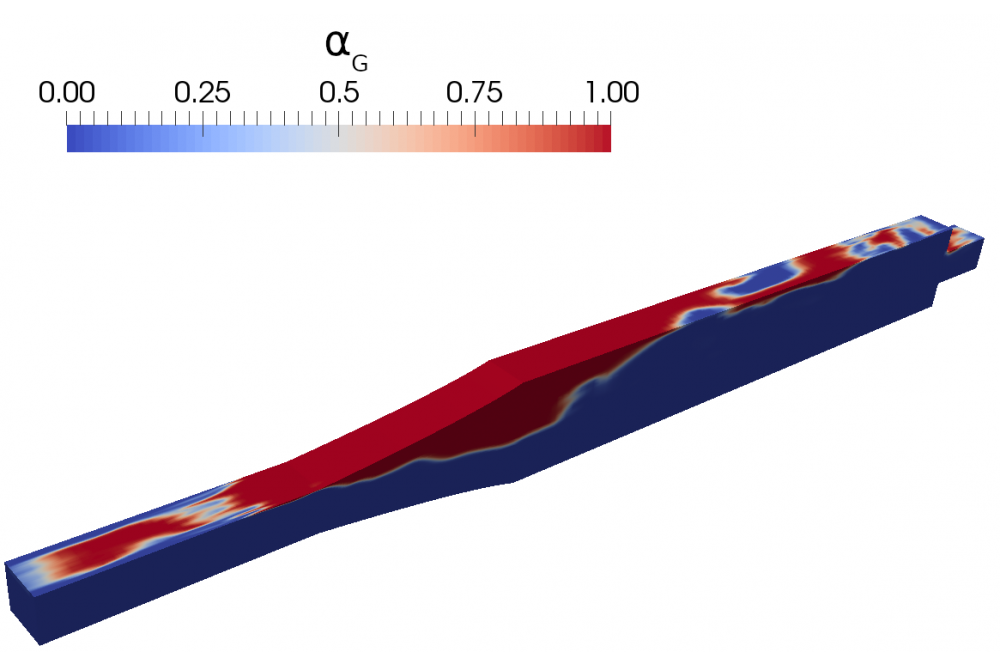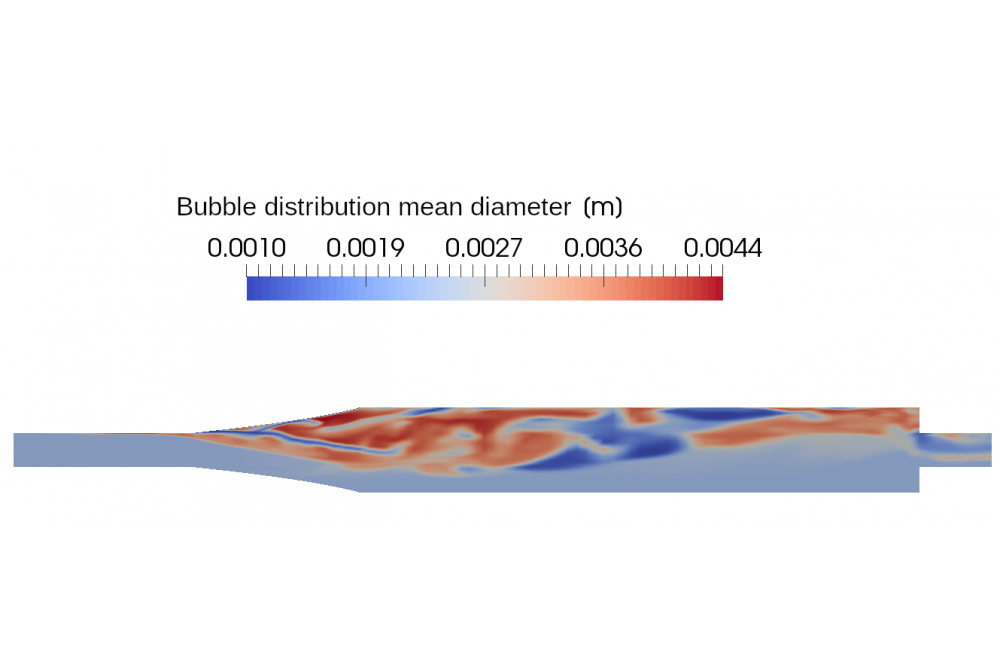Development of a Validated and Efficient Calculation Method to Expand the Operating Range of Centrifugal Pumps for Pumping Gas Loaded Liquids
Introduction
Many technical applications in chemistry engineering are multiphase flows as they contain entrained air or effects such as evaporation or mixing. Pumping these liquid-gas mixtures is, however, crucial. The performance of centrifugal pumps drops drastically, starting at a overall gas-volume-fraction of about 2%. Not only the pure volume occupied by the gas is critical. Also the spatial distribution of the gas agglomerations within the pump and the bubble sizes have a crucial impact on the discharge head. CFD (Computational Fluid Dynamics) is a well-suited method to perform investigations, which allow a deep insight and provide a greater understanding of these processes.
Methods
These multiphase-flows, which are described by the governing equations for conservation of mass, momentum, volume fractions and the bubble size distributions are investigated with the Finite-Volume CFD-Solver OpenFOAM-6. The description of the bubbles is twofold: Larger bubbles must be directly resolved by Volume- of-Fluid (VOF) -like methods, whereas the appearance of small bubbles must be treated statistically by a Number-Distribution-Function (NDF). Three different approaches were tested for the statistical representation: (i) a simple evaluation of a mean particle diameter and the overall bubble number, i.e. neglecting the variance of the droplet distribution. This simplification is, however, commonly too restrictive for real applications. (ii) a discretization of the droplet distribution: here for a set of predefined, interacting bubble-sizes classes is solved. (iii) Quadrature-based-Moment Methods (QbMM): this approach solves a set of higher-order moments of the underlying distribution. This approach provides an efficient closure by a set of Gaussian Quadrature nodes, generated by specific algorithms using the moments solved. Source terms for the bubble size distribution considered were coalescence and break-up.
Results
In the frame of this project a solver to model all these described phenomena was developed, verified and validated. The newly implemented QbMM approach in the solver (combining the new QbMM-specific derived formulations for the break-up and coalescence processes) was validated by a set of test cases of increasing complexity. First, very well reproducible setups were calculated which observe specific phenomena very isolated, such as break-up in a starring reactor. Later, these effects were transferred into simulations of a bubbly flows through a diffusor using Large-Eddy- simulations (LES). Within the verification and validation cases it could be demonstrated that the QbMM approach offers an efficient alternative to model the evolution of the bubble distribution. It provides a numerically very efficient description of the disperse description and yields very precise results.
Discussion
This work states the groundwork for the upcoming calculations of the multiphase flows combining the QbMM approaches for the statistical representation with the direct description of the VOF. All QbMM formulations (including the adapted model formulations for coalescence and break-up) showed good results and their potential for future use, i.e. bubble-laden flows in pumps. Further focus still needs to be put on the VOF-phase boundary resolution. Here exist still extensions promising for future use.





